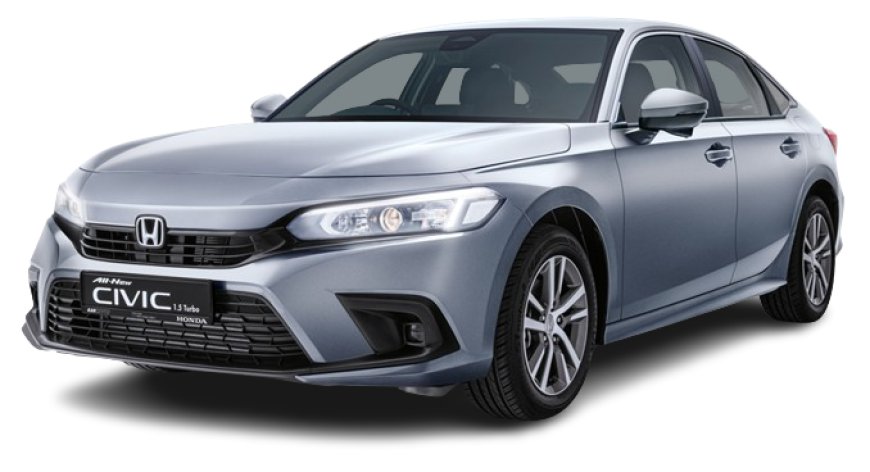The Effect of Trade Agreements on Honda Civic Price in Pakistan
This blog explores the significant impact of trade agreements on the pricing dynamics of the Honda Civic in Pakistan. It discusses how reductions in tariffs and import duties lower production costs, enhancing Honda's competitive pricing. Additionally, it highlights the benefits of improved supply chain efficiency, foreign direct investment, and market access that arise from these agreements. As the automotive market evolves, the influence of global trends and consumer preferences on Honda's pricing strategy is also examined. Ultimately, trade agreements play a crucial role in enabling Honda to maintain its position while delivering quality and value to consumers in Pakistan.

Trade agreements play a crucial role in shaping the automotive market, influencing everything from production costs to consumer prices. In Pakistan, the Honda Civic is a popular choice among consumers, known for its reliability, performance, and modern features. However, the pricing of the Civic is not solely determined by market forces; it is also significantly affected by various trade agreements. This blog explores how trade agreements impact the Honda Civic price in Pakistan.
1. Reduction of Tariffs and Import Duties
One of the primary effects of trade agreements is the reduction of tariffs and import duties on imported vehicles and auto parts:
- Lower Import Costs: Trade agreements often lead to the elimination or reduction of tariffs on automotive imports. For Honda, this can mean lower costs for components and materials sourced from international suppliers, which can directly influence the pricing of the Civic in Pakistan.
- Competitive Pricing: With reduced import duties, Honda can maintain competitive pricing for the Civic, making it more accessible to a broader range of consumers. This competitive edge can help Honda capture a larger market share in the increasingly crowded automotive landscape.
2. Enhanced Supply Chain Efficiency
Trade agreements can also lead to improved supply chain efficiency, benefiting manufacturers like Honda:
- Streamlined Processes: Agreements that facilitate smoother trade can reduce delays and improve the logistics involved in importing vehicle components. This efficiency can lower operational costs for Honda, allowing the company to offer the Civic at more attractive price points.
- Access to a Broader Market: By being part of regional trade agreements, Honda can tap into new markets for sourcing materials and components, potentially reducing production costs further. This access can contribute to competitive pricing for the Civic in Pakistan.
3. Foreign Direct Investment (FDI)
Trade agreements often encourage foreign direct investment, which can impact local automotive manufacturing:
- Increased Investment in Local Manufacturing: If trade agreements provide incentives for foreign companies to invest in local manufacturing facilities, Honda may expand its production capabilities in Pakistan. This could lead to lower production costs, positively influencing the pricing of the Civic.
- Development of Local Suppliers: Increased FDI can foster the development of local suppliers for Honda, reducing dependence on imported components. Local sourcing can help lower costs and improve the overall pricing strategy for the Civic.
4. Market Access and Competition
Trade agreements can significantly affect market dynamics, impacting competition and pricing strategies:
- Increased Competition: With trade agreements in place, Honda may face increased competition from other automakers who can also benefit from reduced tariffs. This competition can lead to price adjustments for the Civic as Honda seeks to maintain its market position.
- Pricing Pressure: In a competitive landscape, manufacturers may be compelled to lower their prices to attract consumers. Honda may adjust the pricing of the Civic based on competitive pressures arising from trade agreements that open the market to other automotive brands.
5. Influence of Global Trends
Trade agreements often align with global automotive trends, affecting pricing strategies:
- Adoption of New Technologies: Trade agreements can facilitate the importation of advanced technologies and environmentally friendly materials. If Honda incorporates these innovations into the Civic, it may justify a higher price due to enhanced features and performance.
- Shift Toward Sustainability: As global markets shift toward sustainability, trade agreements can promote the adoption of eco-friendly practices. Honda may need to invest in sustainable technologies for the Civic, which can impact pricing based on the associated production costs.
6. Impact on Consumer Preferences
Trade agreements can shape consumer preferences, influencing pricing dynamics:
- Awareness of Global Brands: With increased access to international automotive brands through trade agreements, consumers may become more discerning. Honda may need to adjust its pricing strategy for the Civic to align with consumer expectations and perceptions of value.
- Brand Loyalty and Perceived Value: As consumers evaluate their options, brand loyalty can influence pricing. If Honda maintains a strong reputation for quality and reliability, it may be able to sustain a premium price for the Civic, even amid increased competition.
Conclusion
Trade agreements significantly impact the pricing dynamics of the Honda Civic in Pakistan. From reducing tariffs and import duties to enhancing supply chain efficiency and fostering foreign direct investment, these agreements shape the overall landscape in which Honda operates. As the market evolves and competition increases, Honda must navigate the complexities of trade agreements to maintain its position in the automotive sector. By adapting to the opportunities and challenges presented by these agreements, Honda can continue to offer the Civic at competitive prices while meeting consumer demands for quality, performance, and value in Pakistan's automotive market.

 Anokshi kumari
Anokshi kumari